The Next Level of Human Robot Collaboration

Posted on Mar 28, 2016 7:00 AM. 4 min read time
Human robot collaboration for the most part is seen as a robot doing a job alongside a human. However, as the technology evolves and robotic devices become more refined, another level of human robot collaboration is appearing. In fact, collaboration where the user gives physical input (in this case, touch) to the robot directly which initiates a reaction and starts a certain task, is a very novel move forward for cobots.
Indeed, our Italian distributor; Alumotion in conjunction with ArtiMinds, who developed the software, has put together a solution for a pick and place application which is initiated by the direct touch of a person. The application was developed as a demo for the trade show, Mecspe in Parma, Italy. To start the program and to dispense the product, here bags of chips, the operator has to double tap the Gripper and the robot, a UR5, will start or stop consequently. Take a look at the video to see how the application is working.
The application
To really understand what is going on you need to separate each motion into individual steps. 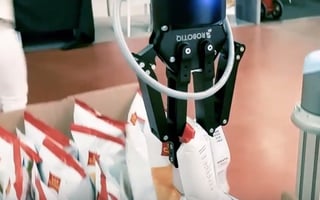
- Starting: The starting process is done with a quick double tap by the user on the robot Gripper. Since there are no tactile sensors or other ways to detect human touch on the Gripper, the robot program is using the force applied by the user to start the picking routine by detecting it with the FT Sensor. So in other words, the robot is always ''looking'' for two quick pressure taps as its signal to start up.
- Picking the Chips: This part of the process is pretty simple, in fact the robot will place the Gripper in front of the first row of chip bags and will 'seek' until it hits a bag. In fact the FT Sensor will be set to detect a certain force variation and will know that when this threshold is reached, a bag is then detected. Once a bag is detected, the robot does a position offset to grasp the bag. Using the 2-Finger 140 allows the application to have a large opening range or stroke between the fingers, which in turns allows it to grasp objects such as chip bags.
- Re-grasping: The re-grasp or constant grasping is a feature that has been
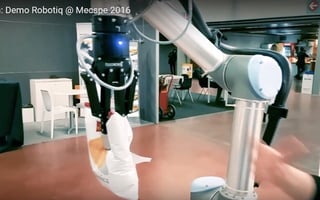 introduced to Robotiq’s Grippers quite recently. In fact, this software add-on allows the Gripper to keep a constant grasping force between its 2 fingers. This means that if the Gripper has been set to reach a 100N threshold between its fingers it will reach it and always look to maintain this force. This is the same way that a human would do it. The Gripper will grasp the object and retain a constant pressure with its fingers against the object to avoid slippage. Like the human hand, the positioning is not very important, in fact a constant grip and the necessary force is the only important data to consider in these types of situations. Aside from the level of force, which of course is set NOT to squash the chips inside the air packed bags.
introduced to Robotiq’s Grippers quite recently. In fact, this software add-on allows the Gripper to keep a constant grasping force between its 2 fingers. This means that if the Gripper has been set to reach a 100N threshold between its fingers it will reach it and always look to maintain this force. This is the same way that a human would do it. The Gripper will grasp the object and retain a constant pressure with its fingers against the object to avoid slippage. Like the human hand, the positioning is not very important, in fact a constant grip and the necessary force is the only important data to consider in these types of situations. Aside from the level of force, which of course is set NOT to squash the chips inside the air packed bags. - Final Touch: Finally to liberate the plastic bag, the robot program uses the exact same input as the starting routine, 2 quick successive taps.
The cell
As described in the video, the cell is using a Universal Robots, UR5 collaborative robot. At its wrist, the robot is using a FT 300 Force Torque Sensor and a 2-Finger 140 Adaptive Gripper. The advantage of using these devices together, aside from the fact that they fit mechanically together pretty seamlessly and thus eliminate a lot of potential pinch points, is that they are also really easy to integrate. In fact, with smooth connectivity and embedded software, our Robotiq products are designed to be up and running in very little time.
If you have an interesting application using any of our products, we are always seeking innovative ideas like this one and we are stoked to share them with other users or potential users. We love sharing ideas for novel applications and we also love ideas that might improve older applications. So if you have an idea, send us your video and we will spread the good news.

 introduced to Robotiq’s Grippers quite recently. In fact, this software add-on allows the Gripper to keep a constant grasping force between its 2 fingers. This means that if the Gripper has been set to reach a 100N threshold between its fingers it will reach it and always look to maintain this force. This is the same way that a human would do it. The Gripper will grasp the object and retain a constant pressure with its fingers against the object to avoid slippage. Like the human hand, the positioning is not very important, in fact a constant grip and the necessary force is the only important data to consider in these types of situations. Aside from the level of force, which of course is set NOT to squash the chips inside the air packed bags.
introduced to Robotiq’s Grippers quite recently. In fact, this software add-on allows the Gripper to keep a constant grasping force between its 2 fingers. This means that if the Gripper has been set to reach a 100N threshold between its fingers it will reach it and always look to maintain this force. This is the same way that a human would do it. The Gripper will grasp the object and retain a constant pressure with its fingers against the object to avoid slippage. Like the human hand, the positioning is not very important, in fact a constant grip and the necessary force is the only important data to consider in these types of situations. Aside from the level of force, which of course is set NOT to squash the chips inside the air packed bags.
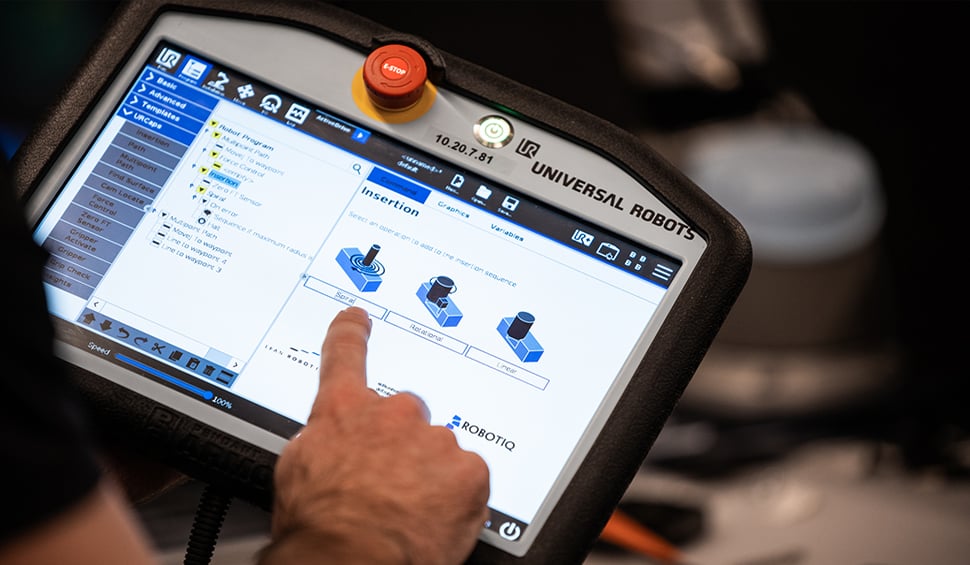

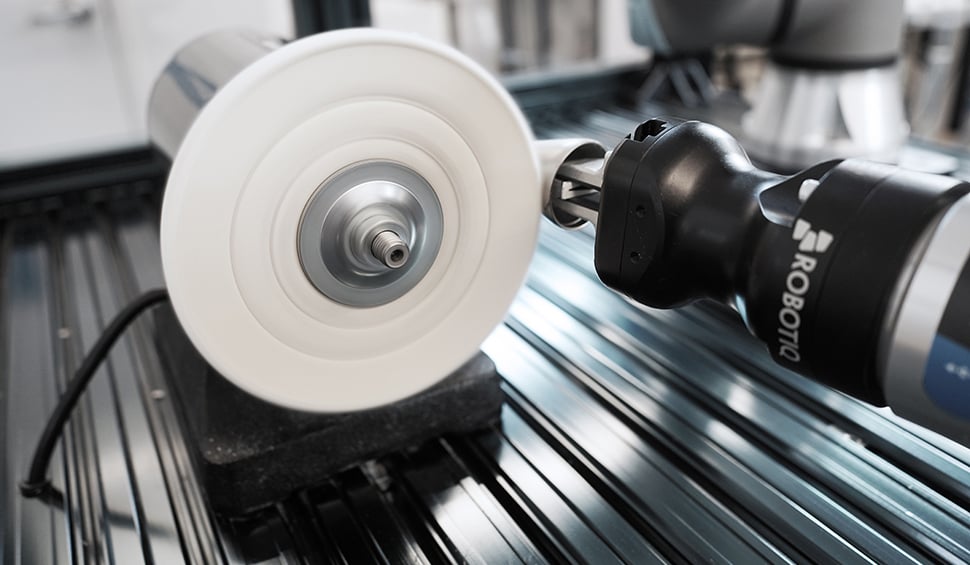
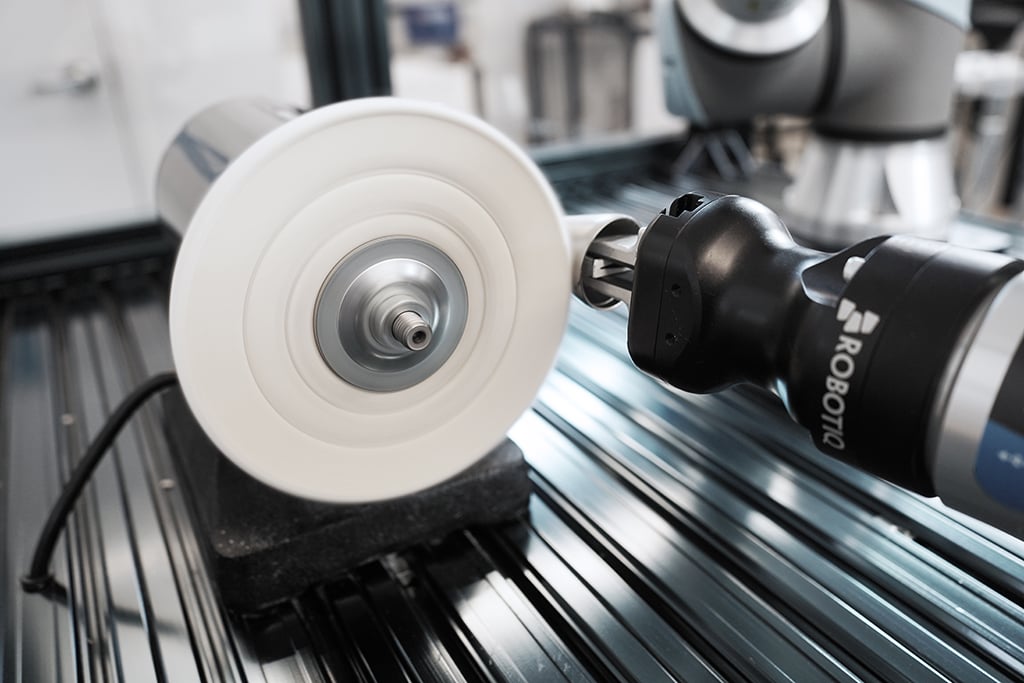

Leave a comment